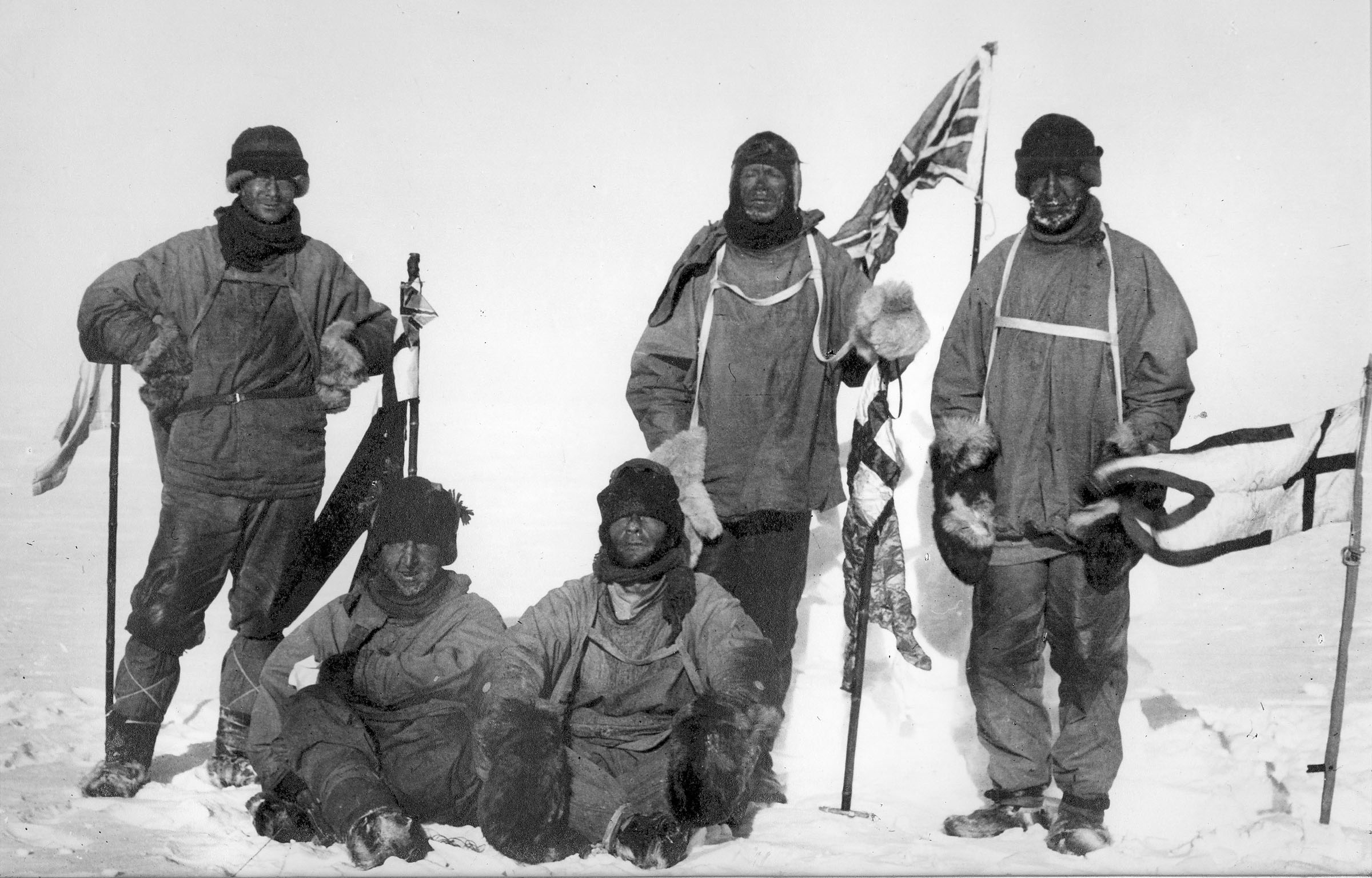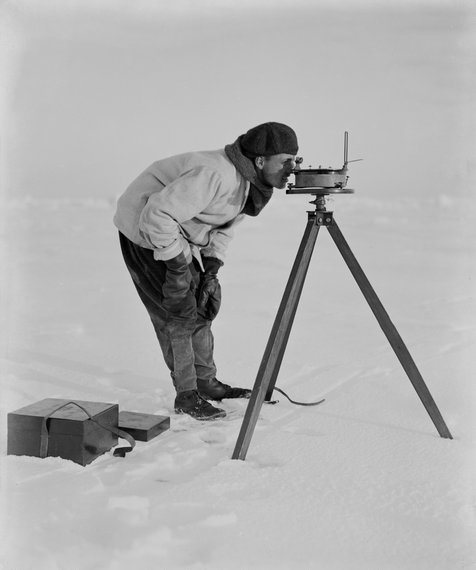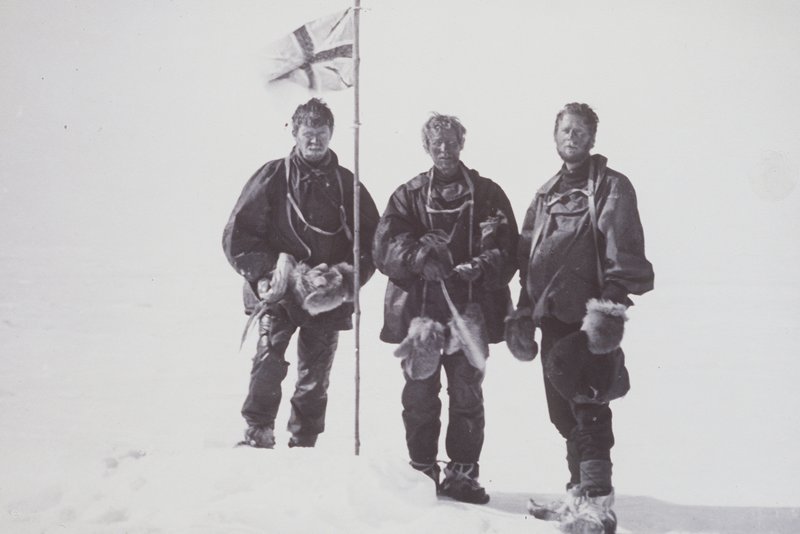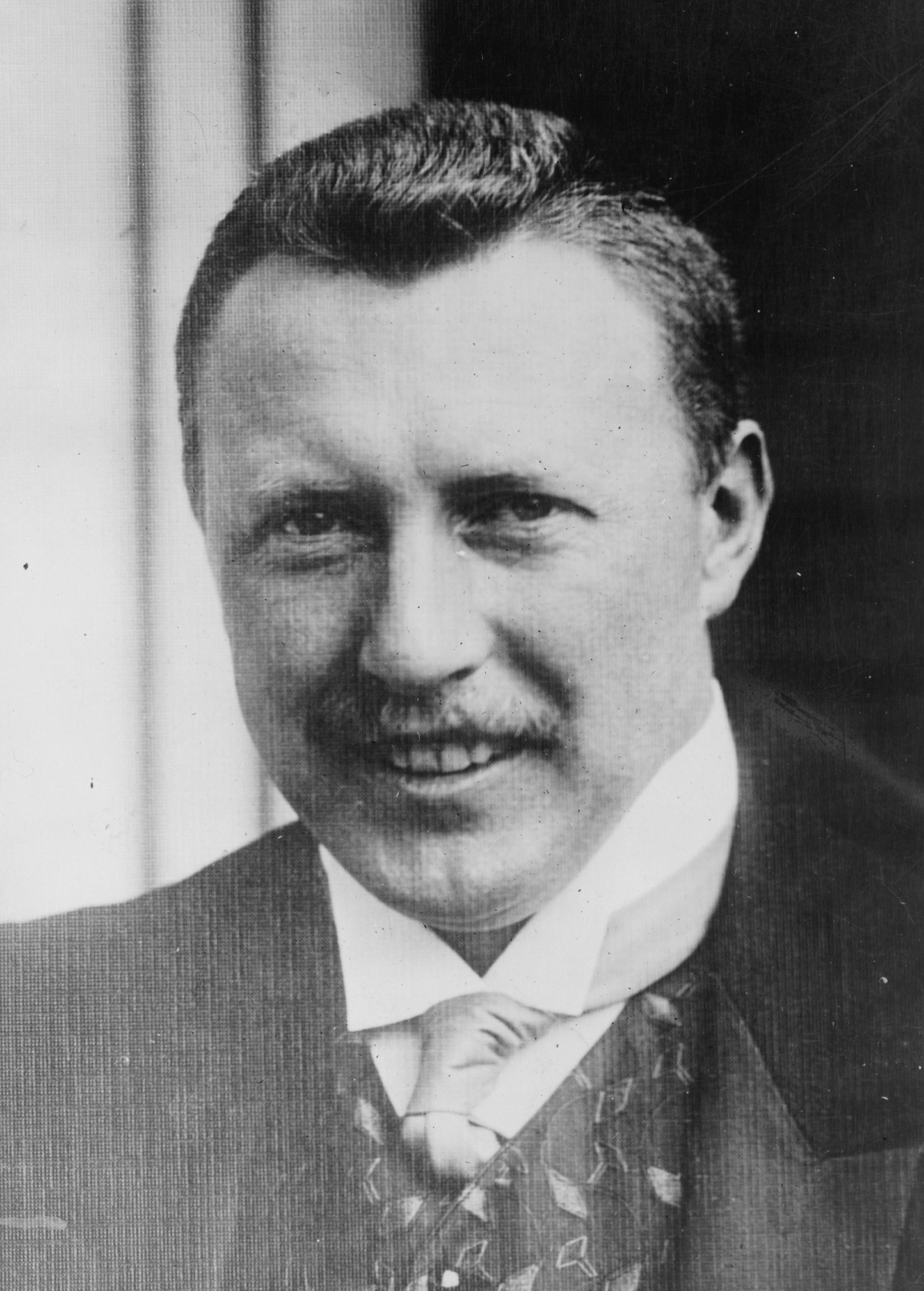|
British Antarctic Expedition, 1910–13
The ''Terra Nova'' Expedition, officially the British Antarctic Expedition, was an expedition to Antarctica which took place between 1910 and 1913. Led by Captain Robert Falcon Scott, the expedition had various scientific and geographical objectives. Scott wished to continue the scientific work that he had begun when leading the ''Discovery'' Expedition from 1901 to 1904, and wanted to be the first to reach the geographic South Pole. He and four companions attained the pole on 17 January 1912, where they found that a Norwegian team led by Roald Amundsen had preceded them by 34 days. Scott's party of five died on the return journey from the pole; some of their bodies, journals, and photographs were found by a search party eight months later. The expedition, named after its supply ship, was a private venture financed by public contributions and a government grant. It had further backing from the Admiralty, which released experienced seamen to the expedition, and from the Royal ... [...More Info...] [...Related Items...] OR: [Wikipedia] [Google] [Baidu] |
McMurdo Sound
The McMurdo Sound is a sound in Antarctica, known as the southernmost passable body of water in the world, located approximately from the South Pole. Captain James Clark Ross discovered the sound in February 1841 and named it after Lieutenant Archibald McMurdo of HMS ''Terror''. The sound serves as a resupply route for cargo ships and airplanes that land on floating ice airstrips near McMurdo Station. The McMurdo seasonal Ice Runway was operated from October to December from the 1950s to the 2010s, then in December the ice breaks up and McMurdo port is opened by an Icebreaker ship and ships can resupply the Antarctic bases. Physical characteristics Boundary and extents The sound extends approximately 55 kilometers (34 mi) in length and width, and opens into the larger Ross Sea to the north. To the south, the sound is bounded by the Ross Ice Shelf cavity, to the west lies the Royal Society Range, and to the east is Ross Island. McMurdo Sound is separated from the ... [...More Info...] [...Related Items...] OR: [Wikipedia] [Google] [Baidu] |
Harry Pennell
Commander Harry Lewin Lee Pennell (1882 – 31 May 1916) was a Royal Navy officer who served on the Terra Nova Expedition. He was responsible for the first sighting of Oates Coast on 22 February 1911, and named it after Captain Lawrence Oates. He only spent short periods in Antarctica, returning with the ''Terra Nova'' to wait out the winters of 1911 and 1912 in Lyttelton, New Zealand. Due to the absence of Robert Falcon Scott on land, Pennell assumed the role of command on the Terra Nova, which would bring fresh supplies back to Antarctica with each voyage. Despite not being a part of the main landing party for the Pole, Pennell was a popular member of the expedition. Herbert Ponting, the photographer of the expedition, recalled in his book ''The Great White South'' that Pennell was "the most energetic man I have ever known....when Pennell was not occupied with navigating problems, he was either on watch, or conning from the crow's-nest, or else out on the yard-arms helping the s ... [...More Info...] [...Related Items...] OR: [Wikipedia] [Google] [Baidu] |
Royal Navy
The Royal Navy (RN) is the naval warfare force of the United Kingdom. It is a component of His Majesty's Naval Service, and its officers hold their commissions from the King of the United Kingdom, King. Although warships were used by Kingdom of England, English and Kingdom of Scotland, Scottish kings from the early Middle Ages, medieval period, the first major maritime engagements were fought in the Hundred Years' War against Kingdom of France, France. The modern Royal Navy traces its origins to the English Navy of the early 16th century; the oldest of the British Armed Forces, UK's armed services, it is consequently known as the Senior Service. From the early 18th century until the World War II, Second World War, it was the world's most powerful navy. The Royal Navy played a key part in establishing and defending the British Empire, and four Imperial fortress colonies and a string of imperial bases and coaling stations secured the Royal Navy's ability to assert naval superior ... [...More Info...] [...Related Items...] OR: [Wikipedia] [Google] [Baidu] |
SY Morning
SY ''Morning'' was a steam yacht, known for her role as a relief vessel to Scott's British National Antarctic Expedition (1901–1904). She made two voyages to the Antarctic to resupply the expedition. Acquisition for the British National Antarctic Expedition ''Morgenen'' was a Norwegian whaling ship, built in 1871 by Svend Foyn of Tønsberg, Norway. In 1901 she was purchased as a relief ship for the British National Antarctic Expedition for £3,880. In September 1901, she sailed from Norway to England where she was refitted and renamed ''Morning'', the same name translated into English. Ships' company The officers that set sail from London in 1902 were: Captain William Colbeck RNR; Rupert G. England, first officer; Lieutenant E.R.G.R. Evans RN, second officer; Gerald Doorly RNR, third officer; Sub-Lieutenant G.F.A. Mulock RN, fourth officer; Doctor G.A. Davidson; J.D. Morrison, chief engineer; and F. L. Maitland-Somerville and Neville Pepper, both midshipmen. The crew ... [...More Info...] [...Related Items...] OR: [Wikipedia] [Google] [Baidu] |
Edward Evans, 1st Baron Mountevans
Admiral (Royal Navy), Admiral Edward Ratcliffe Garth Russell Evans, 1st Baron Mountevans, (28 October 1880 – 20 August 1957) was a Royal Navy officer and Antarctic explorer.H. G. Thursfield, 'Evans, Edward Ratcliffe Garth Russell, first Baron Mountevans (1880–1957)', rev. Oxford Dictionary of National Biography, Oxford University Press, 2004; online edn, Jan 2011. Evans was seconded from the navy to the Discovery expedition, ''Discovery'' expedition to Antarctica in 1901–1904, when he served on the crew of the relief ship, and afterwards began planning his own Antarctic expedition. However, he suspended this plan when offered the post of second-in-command on Robert Falcon Scott's ill-fated Terra Nova expedition, ''Terra Nova'' expedition to the South Pole in 1910–1913, as captain of the expedition ship . He accompanied Scott to within 150 miles of the Pole, but was sent back in command of the last supporting party. On the return he became seriously ill with scurvy ... [...More Info...] [...Related Items...] OR: [Wikipedia] [Google] [Baidu] |
Scott Of The Antarctic Crop
Scott may refer to: Places Canada * Scott, Quebec, municipality in the Nouvelle-Beauce regional municipality in Quebec * Scott, Saskatchewan, a town in the Rural Municipality of Tramping Lake No. 380 * Rural Municipality of Scott No. 98, Saskatchewan United States * Scott, Arkansas * Scott, Georgia * Scott, Indiana * Scott, Louisiana * Scott, Missouri * Scott, New York * Scott, Ohio * Scott, Wisconsin (other) (several places) * Fort Scott, Kansas * Great Scott Township, St. Louis County, Minnesota * Scott Air Force Base, Illinois * Scott City, Kansas * Scott City, Missouri * Scott County (other) (various states) * Scott Mountain (other) (several places) * Scott River, in California * Scott Township (other) (several places) Elsewhere * 876 Scott, minor planet orbiting the Sun * Scott (crater), a lunar impact crater near the south pole of the Moon *Scott Conservation Park, a protected area in South Australia Lists * Scott Point (disa ... [...More Info...] [...Related Items...] OR: [Wikipedia] [Google] [Baidu] |
Roald Amundsen
Roald Engelbregt Gravning Amundsen (, ; ; 16 July 1872 – ) was a Norwegians, Norwegian explorer of polar regions. He was a key figure of the period known as the Heroic Age of Antarctic Exploration. Born in Borge, Østfold, Norway, Amundsen began his career as a polar explorer as first mate on Adrien de Gerlache's Belgian Antarctic Expedition of 1897–1899. From 1903 to 1906, he led the first expedition to successfully traverse the Northwest Passage on the sloop ''Gjøa''. In 1909, Amundsen began planning for a Amundsen's South Pole expedition, South Pole expedition. He left Norway in June 1910 on the ship ''Fram (ship), Fram'' and reached Antarctica in January 1911. His party established a Framheim, camp at the Bay of Whales and a series of supply depots on the Barrier (now known as the Ross Ice Shelf) before setting out for the pole in October. The party of five, led by Amundsen, became the first to reach the South Pole on 14 December 1911. Following a failed attemp ... [...More Info...] [...Related Items...] OR: [Wikipedia] [Google] [Baidu] |
Douglas Mawson
Sir Douglas Mawson (5 May 1882 – 14 October 1958) was a British-born Australian geologist, Antarctic explorer, and academic. Along with Roald Amundsen, Robert Falcon Scott, and Sir Ernest Shackleton, he was a key expedition leader during the Heroic Age of Antarctic Exploration. Mawson was born in England and was brought to Australia as an infant. He completed degrees in mining engineering and geology at the University of Sydney. In 1905 he was made a lecturer in petrology and mineralogy at the University of Adelaide. Mawson's first experience in the Antarctic came as a member of Shackleton's Nimrod Expedition, ''Nimrod'' Expedition (1907–1909), alongside his mentor Edgeworth David. They were part of the expedition's northern party, which became the first to attain the South magnetic pole and to climb Mount Erebus. After his participation in Shackleton's expedition, Mawson became the principal instigator of the Australasian Antarctic Expedition (1911–1914). The expedit ... [...More Info...] [...Related Items...] OR: [Wikipedia] [Google] [Baidu] |
Australasian Antarctic Expedition
The Australasian Antarctic Expedition was a 1911–1914 expedition headed by Douglas Mawson that explored the largely uncharted Antarctic coast due south of Australia. Mawson had been inspired to lead his own venture by his experiences on Ernest Shackleton's ''Nimrod'' expedition in 1907–1909. During its time in Antarctica, the expedition's sledging parties covered around of unexplored territory, while its ship, , navigated of unmapped coastline. Scientific activities included meteorological measurements, magnetic observations, an expansive oceanographic program, and the collection of many biological and geological samples, including the discovery of the first meteorite found in Antarctica. The expedition was the first to establish and maintain wireless contact between Antarctica and Australia. Another planned innovation – the use of an aircraft – was thwarted by an accident before the expedition sailed. The plane's fuselage was adapted to form a motorised sledge or "air ... [...More Info...] [...Related Items...] OR: [Wikipedia] [Google] [Baidu] |
Wilhelm Filchner
Wilhelm Filchner (13 September 1877 – 7 May 1957) was a German army officer, scientist and explorer. He conducted several surveys and scientific investigations in China, Tibet and surrounding regions, and led the Second German Antarctic Expedition, 1911–13. As a young military officer, Filchner gained an early reputation for dash and daring, following his travel exploits in Russia and the Pamir Mountains range. After further technical studies, he developed expertise in geography and geophysics, before leading a major scientific survey in Tibet and western China in 1903–05. In 1909 he was appointed to organise and lead the forthcoming German expedition to the Antarctic, with both scientific and geographical objectives involving extensive exploration of the continent's interior. During the expedition his ship became trapped in the Weddell Sea ice, drifting for eight months and preventing Filchner from establishing a land base, thus failing in its main objective. Although impor ... [...More Info...] [...Related Items...] OR: [Wikipedia] [Google] [Baidu] |
Second German Antarctic Expedition
The Second German Antarctic Expedition of 1911–1913 was led by Wilhelm Filchner in the exploration ship . Its principal objective was to determine whether the Antarctic continent comprised a single landmass rather than separated elements, and in particular whether the Weddell Sea and Ross Sea were connected by a strait. In addition, an extensive programme of scientific research was undertaken. The expedition failed to establish a land base, and the ship became beset in the Weddell Sea ice, drifting north for eight months before reaching open water. The expedition was marred by considerable disagreement and animosity among its participants, and broke up in disarray. The expedition secured the patronage of Luitpold, Prince Regent of Bavaria, who formed a fundraising committee which organised, among other activities, a public lottery. After leaving Germany early in May 1911, the expedition carried out a thorough oceanography, oceanographic survey of the Atlantic Ocean before arriv ... [...More Info...] [...Related Items...] OR: [Wikipedia] [Google] [Baidu] |







